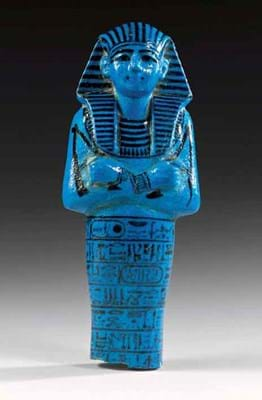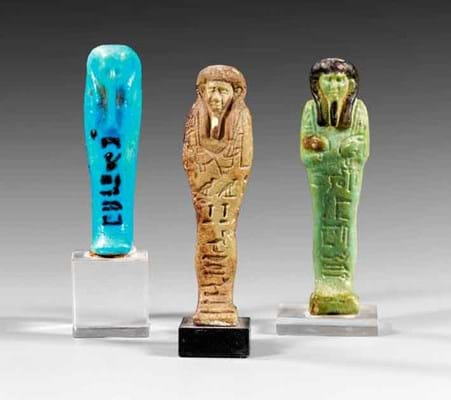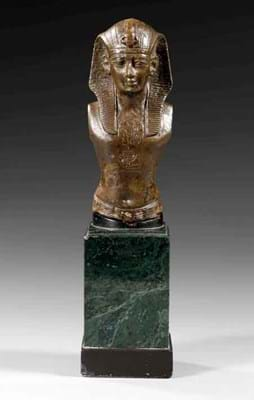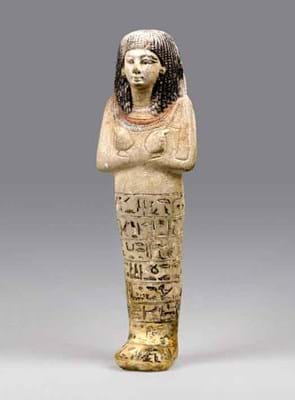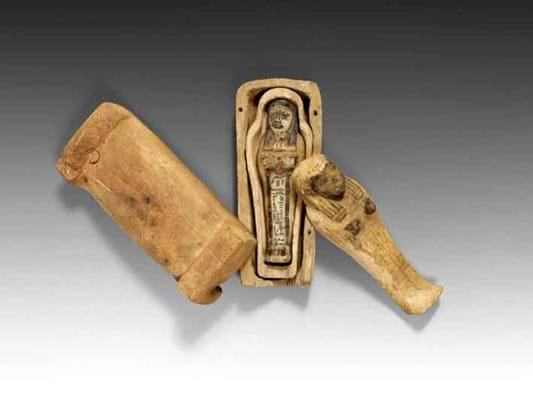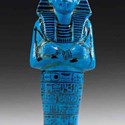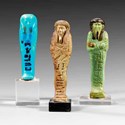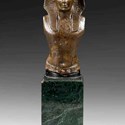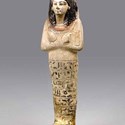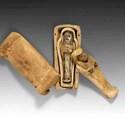In London, Christie's obtained a blockbuster £3.25m for a stone statue, but meanwhile, in Paris, two firms have offered single-owner Egyptian collections at Drouot: Auction Art's (20/12% buyer's premium) 159-lot sale of the Maurice Mathieu collection on October 10 and Thierry de Maigret's (20% buyer's premium) sale of the 220-lot Charles Bouché collection on October 24.
And there is more to follow this month as Pierre Bergé et Associés offer a library of Egyptology on November 29 and a mixed-owner sale the next day that features several Egyptian artefacts among its highlights.
The Bouché collection sale was an event with a stand-out item: a brilliant blue faience royal shabti from the tomb of Sethi Ist (1294-1279BC) which was pursued to €740,000 (£616,670), way past the predictions of €150,000-200,000 and anything else in the sale.
The late Charles Bouché, who died in 2010, had spent 60 years collecting Egyptian antiquities, focusing on the small funerary statuettes and other ritual elements that were buried with the dead to ease their way in the afterlife.
As a result, there were over 140 shabtis included in this sale but this one was special in terms of both provenance and scarcity. It could be traced back to the excavation of the Pharaoh's tomb by Belzoni in 1817, having belonged to Somerset Lowry Corry, who financed the excavations before it was offered by his descendant at Sotheby's in 1972.
It also bore a seven-line inscription to the lower section naming the Pharaoh. It is one of seven similar royal shabtis from this location but all the others are in institutions, so this was an opportunity to be seized. As always this is a key ingredient when it comes to desirability, hence the multi-estimate result despite the fact that the base bearing two lines of inscription was missing.
The other shabtis in the Bouché sale carried much lower estimates, ranging from around €50,000 down to just a few hundred.
Around three-quarters of these got away with prices falling much more in line with expectations. Other unusual examples included a rare triple-layer miniature model of a sarchophagus comprising a 6¼in (16cm) long rectangular wood outer case opening to reveal an anthropomorphic stuccoed wood sarcophagus inscribed with the name Rentimentep, which in turn opens to reveal a 5in (12.5cm) long alabaster shabti inset with panels of red jasper and green stone and a central inscription. This sold for just below estimate at €45,000 (£37,500).
Saqqarah Shabti
A particularly well-preserved and finely detailed green faience shabti from Saqqarah, 380-342BC, was pursued above expectations to €36,000 (£30,000). This bore an inscription for Tchahorpata, the son of Tefnout, an influential courtier during the reign of Nectanebo II, and was another well-provenanced item, having been in a string of private collections dating back to pre-1912 when it was sold at Drouot as part of the Max de Zogheb collection from Alexandria.
The collection also featured smaller groups of heart scarabs, amulets and bronze votive statuettes. These last proved to be the most difficult section of the auction with around half the examples failing to get away, including several for which the auctioneers had hopes of five-figure prices.
One bronze bucked this trend, though. This was an 4¼in (11cm) high fragmentary bust portrait of a pharaoh bearing an inscription naming Osorkon II, who ruled from 870-850BC. While this piece lacked the arms, the features were finely worked and the piece again had a provenance back to pre-1914 when it was in the Gayer Anderson collection. Last month at Drouot it fetched a triple-estimate €70,000 (£58,335).
Mathieu Collection
Like Charles Bouché, Maurice Mathieu was fascinated by these funerary servants and other elements that were found in the tombs of ancient Egyptians, although shabtis were less dominant in his holdings, which also featured canopic jars, decorative amulets, ancient glass vessels, statuettes and wall reliefs.
Nonetheless, it was the 14-lot shabti section that provided the highest prices in the Auction Art sale of the Mathieu collection two weeks earlier
The collection featured two 19th dynasty limestone shabti figures each inscribed with lines from chapter 6 of the Book of the Dead. Both had a 1999 provenance to the Parisian Galerie Orient-Occident of Jean Loup Despras and were guided at €18,000-25,000.
The first, a servant figure of Mes, 8in (22cm) high but minus the feet, was pursued to €65,000 (£54,170) but the second, a servant figure of Yhou complete and slightly taller at 9½in (24cm) high, was pursued that much higher to €90,000 (£75,000) - the top price of the day.
Another Despras-provenanced piece from back in 1969 was a late Kingdom 19 x 22in (48 x 55cm) polychromed limestone relief fragment, showing a queue of servants bringing various foodstuffs to the deceased to sustain him in the afterlife, which sold for €49,000 (£40,835).
Overall, the auctioneers found buyers for 139, or 87%, of the content, the bulk in the low thousands or hundreds of euros.
£1 = €1.20

